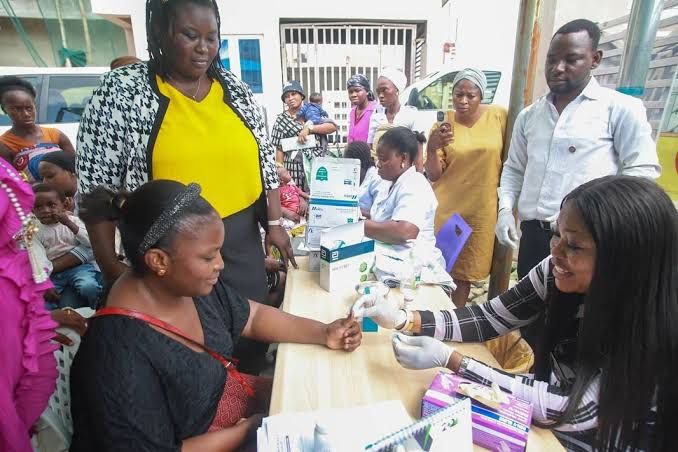
Factors Influencing the Frequency and Severity of Diabetes Mellitus in Various Populations
1. Genetic Predisposition:
Genetics plays a significant role in the development of diabetes mellitus (DM). Certain populations have a higher genetic susceptibility to both type 1 and type 2 diabetes. For instance, individuals of African, Hispanic, Native American, and South Asian descent are at a higher risk for type 2 diabetes due to inherited insulin resistance or beta-cell dysfunction.
2. Lifestyle Factors:
Lifestyle choices such as diet, physical activity levels, and smoking habits significantly influence the frequency of DM. Diets high in processed foods, sugary beverages, and saturated fats increase the risk of obesity—a major precursor to type 2 diabetes. Physical inactivity also contributes to insulin resistance.
3. Urbanization and Socioeconomic Status:
Urbanization has been linked to increased prevalence of DM due to lifestyle changes like reduced physical activity and increased consumption of calorie-dense foods. Higher socioeconomic status is often associated with sedentary lifestyles and unhealthy diets in developing countries, while lower socioeconomic status may limit access to healthcare and preventive measures.
Obesity is one of the strongest modifiable risk factors for type 2 diabetes. Abdominal obesity, in particular, is closely linked with insulin resistance. Populations experiencing rapid increases in obesity rates—such as those undergoing economic transitions—are seeing corresponding rises in DM prevalence.
5. Aging Population:
The risk of developing type 2 diabetes increases with age due to decreased beta-cell function and increased insulin resistance over time. Countries with aging populations tend to report higher frequencies of DM.
6. Healthcare Access and Awareness:
Limited access to healthcare services can delay diagnosis and treatment of DM, leading to more severe complications such as diabetic retinopathy or nephropathy. Public awareness campaigns about healthy lifestyles can reduce the frequency of DM in populations where education is prioritized.
7. Environmental Factors:
Environmental factors such as exposure to endocrine-disrupting chemicals (e.g., pesticides) have been implicated in increasing insulin resistance and beta-cell dysfunction. Additionally, urban environments often lack spaces for physical activity.
Pattern of Diabetes Mellitus Distribution Among Nigerians
Diabetes mellitus (DM) distribution among Nigerians shows significant regional variation influenced by demographic, socioeconomic, cultural, and environmental factors:
1. Prevalence Across Geopolitical Zones:
The prevalence of DM varies across Nigeria’s six geopolitical zones:
- The South-South zone has the highest prevalence at approximately 9.8%–11.35%, likely due to urbanization, dietary habits rich in processed foods, and higher rates of obesity.
- The North-West zone reports the lowest prevalence at around 3%, which may be attributed to rural lifestyles involving more physical activity and traditional diets.
- Other zones like the South-West (5.5%), North-East (5.9%), North-Central (3.8%), and South-East (4.6%) show intermediate prevalence rates.
2. Risk Factors Specific to Nigeria:
- Urbanization: Rapid urban growth has led to sedentary lifestyles among city dwellers.
- Dietary Changes: A shift from traditional diets high in fiber-rich grains and vegetables toward Westernized diets high in fats and sugars has contributed significantly.
- Obesity Rates: Rising obesity levels are particularly notable among adults living in urban areas.
- Physical Inactivity: Urban residents engage less frequently in manual labor or exercise compared to rural populations.
- Socioeconomic Disparities: Wealthier individuals are more likely to adopt unhealthy dietary patterns but also have better access to healthcare for early diagnosis.
- Family History & Genetics: A family history of diabetes increases susceptibility among Nigerians.
3. Age Distribution: DM predominantly affects adults aged 40 years or older; however, younger individuals are increasingly being diagnosed due to rising childhood obesity rates.
4. Gender Differences: Some studies suggest that women may have slightly higher prevalence rates than men due to hormonal influences on glucose metabolism during pregnancy (gestational diabetes) or menopause.
Conclusion
The frequency and severity of diabetes mellitus globally depend on a combination of genetic predisposition, lifestyle factors such as diet and exercise habits, urbanization trends, aging populations, healthcare access disparities, environmental exposures, and public health policies aimed at prevention.
In Nigeria specifically:
- The highest burden is observed in urbanized regions like the South-South zone due to lifestyle changes associated with modernization.
- Rural areas report lower prevalence rates but face challenges related to delayed diagnosis due to limited healthcare infrastructure.
- Addressing modifiable risk factors like unhealthy diets, physical inactivity, obesity prevention programs, public awareness campaigns about diabetes risks can help curb its rising trend.
By understanding these patterns regionally within Nigeria—and globally across different populations—targeted interventions can be designed for effective prevention strategies.







